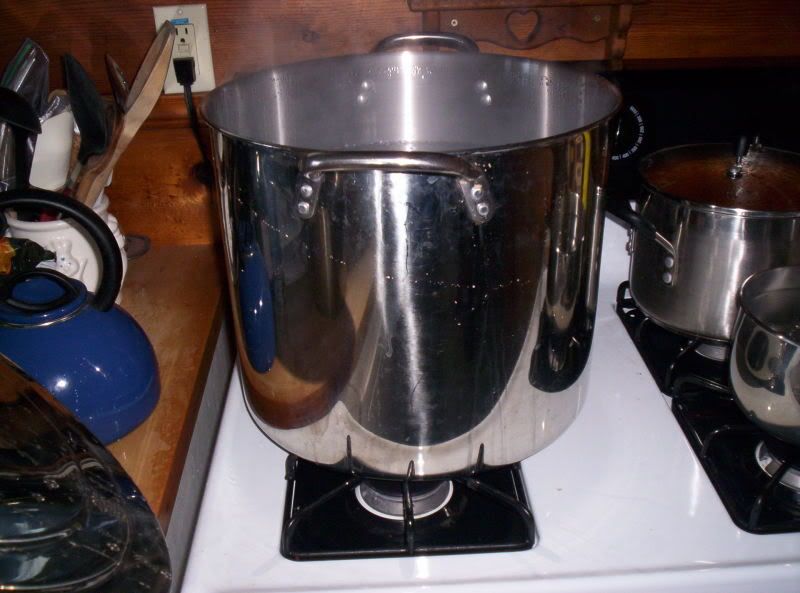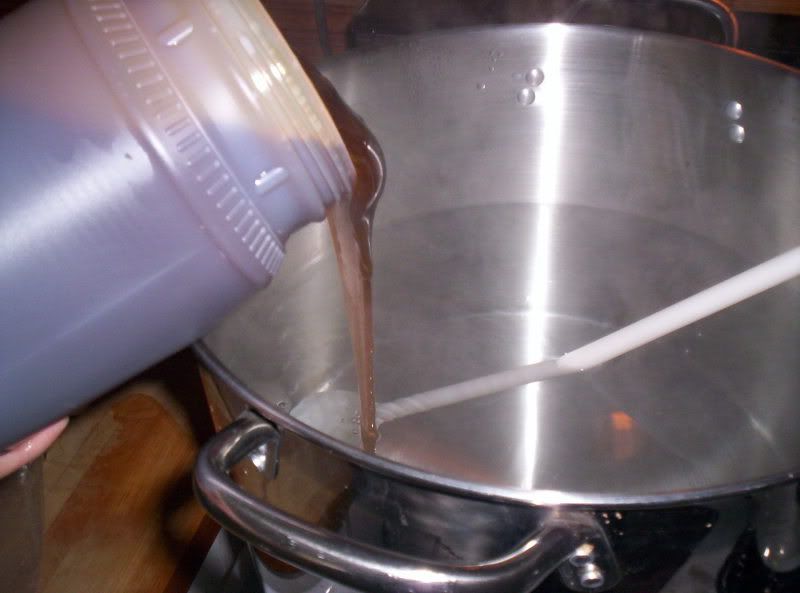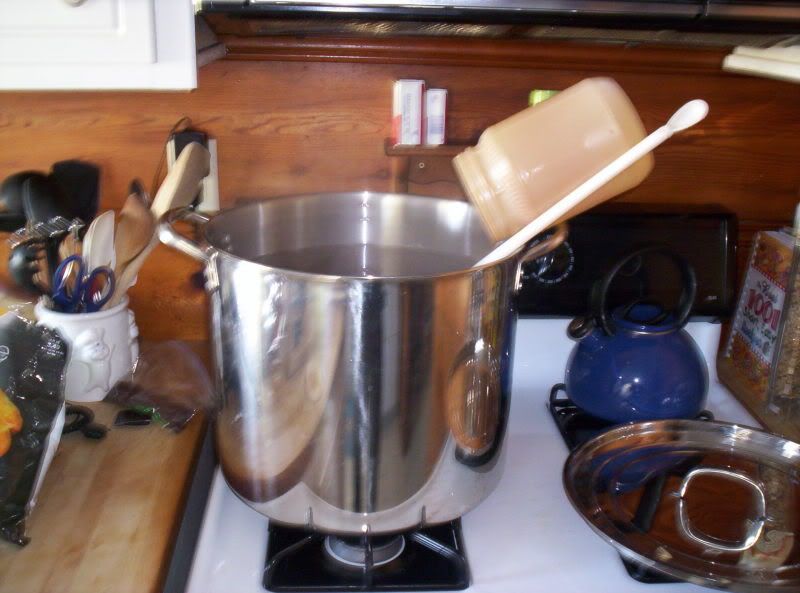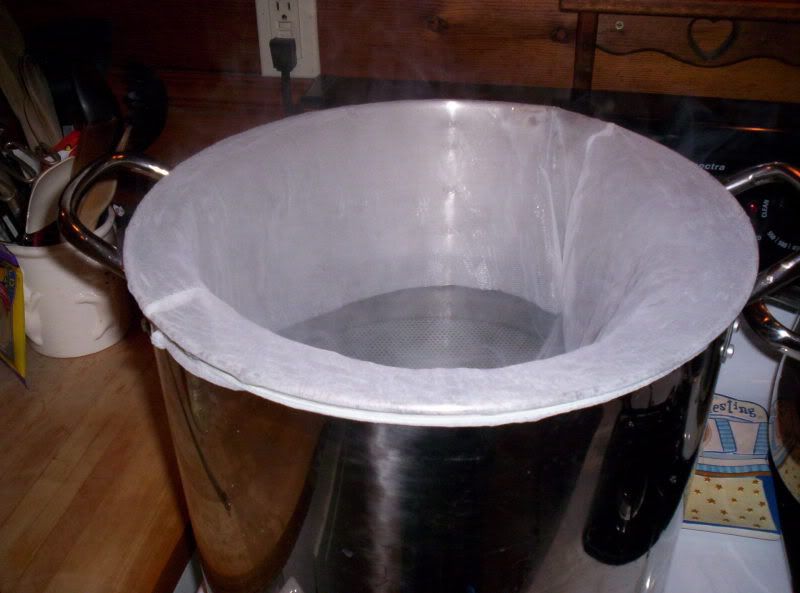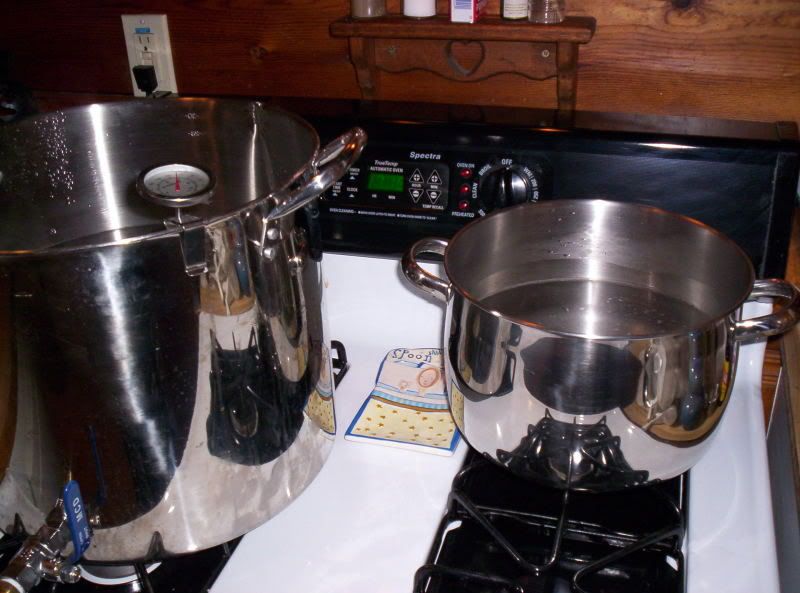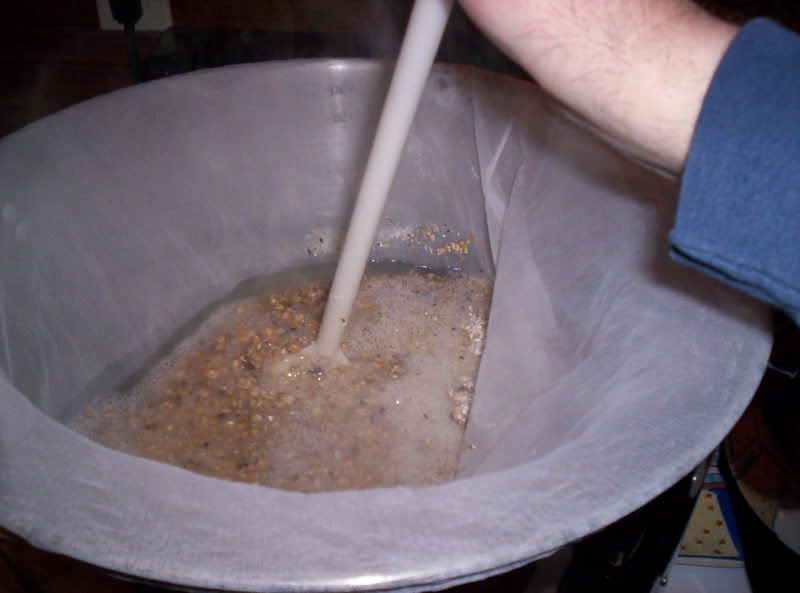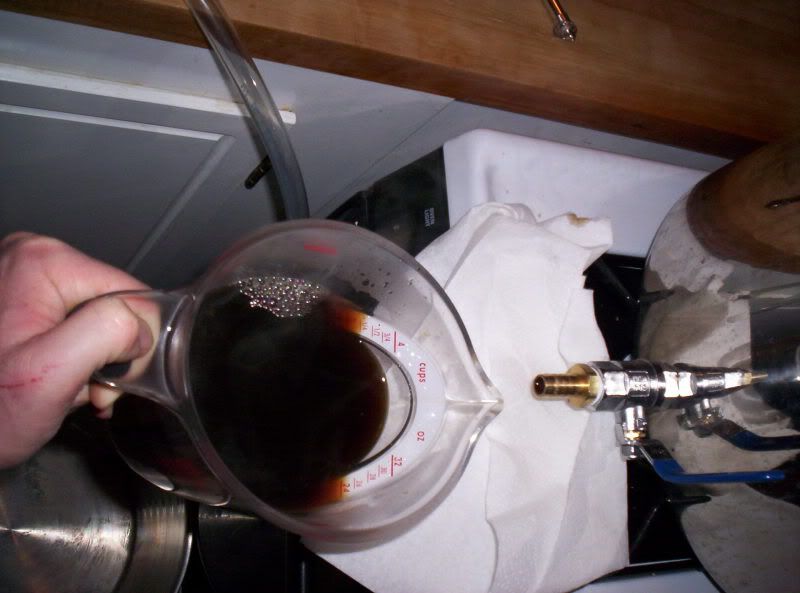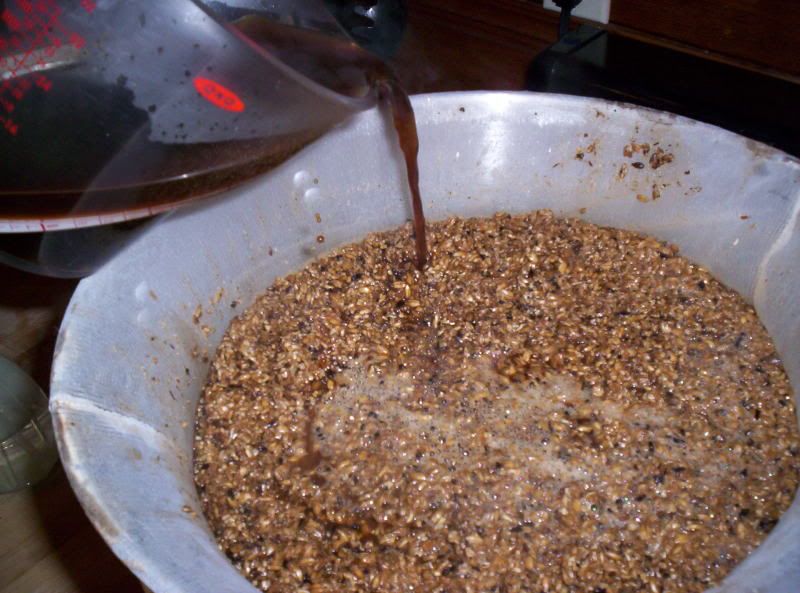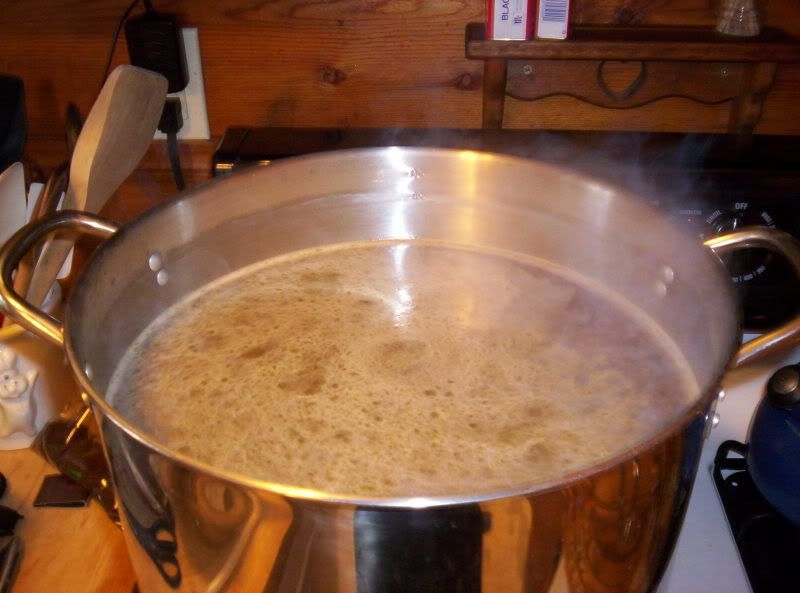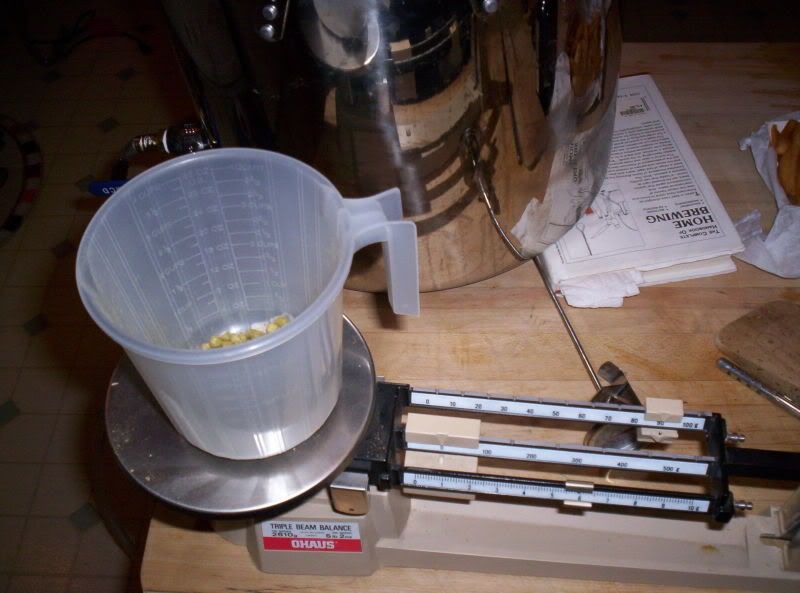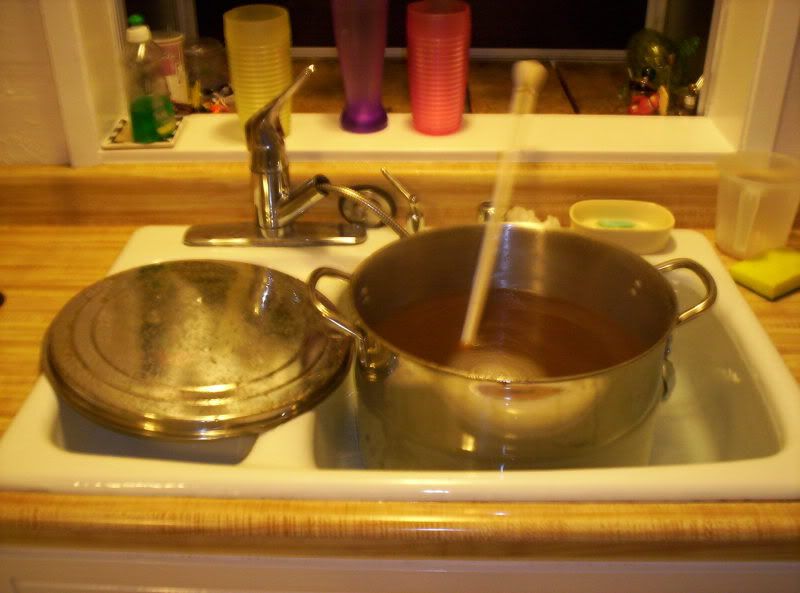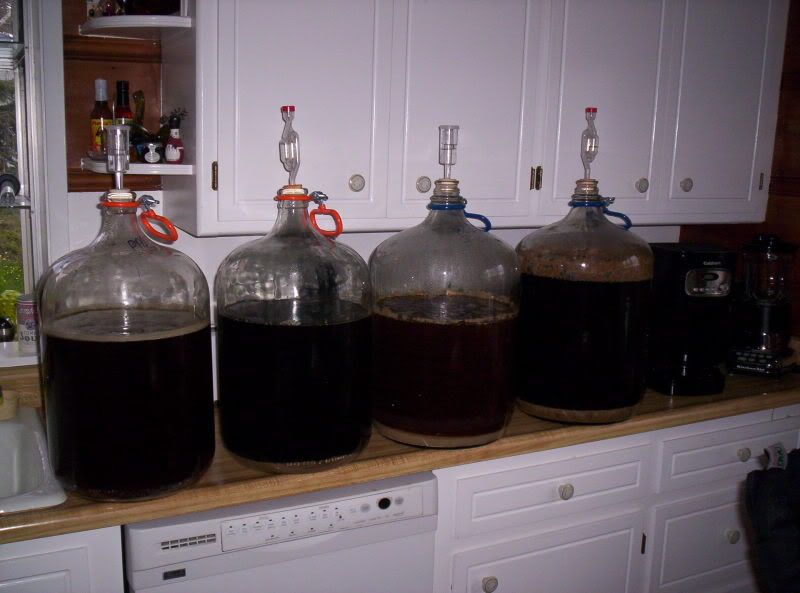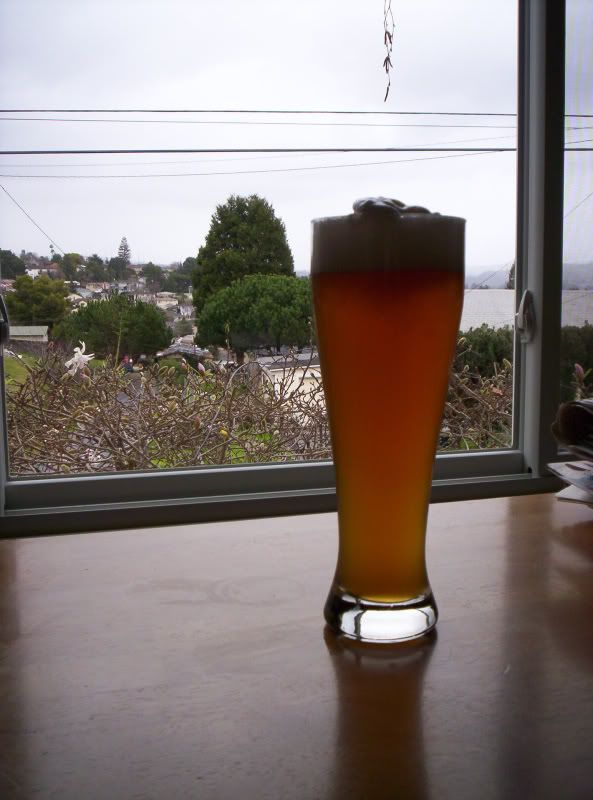Jakemate
Pastafarian Minister
Beer is liquid bread. It is the first form of long term grain storage. Beer is the discovery that created modern society.
Brewing beer is an art for the talentless. There is more labor, science, and ingredient combination than in wine making.
In wine making, there is small effort and a long wait. In brewing, there is a large effort and a short wait.
Remember, if you can bake cookies from scratch, by following a recipe; YOU can brew. Hell, if I can do it, a monkey can.
Basic brewing equipment.
1 To start, the most important thing is your brew kettle. You can get by with an enamelware 5 gallon pot, if you brew short batch.
Short batch is a 3 gallon boil, adding 2 gallons, (or so), of cold water at the end to chill the finished wart.
I use a 30 liter stainless steel kettle. I prefer the larger kettle to avoid a messy boil-over. Do not use an aluminum pot. Aluminum has no place in any of your brewing equipment.

2 Next is fermenters. You can use brew buckets, nothing wrong there. You can pick them up from homebrew suppliers. Alternatively, you can purchase 7 gallon food grade buckets and lids from a resturant supplier. Buy then new and clean.
I prefer glass carboys. I use a 7.5 as a primary fermenter and a 6.5 for the secondary. If you use carboys, purchase a carboy brush for cleaning.
3 Airlocks and corks. You need a rubber cork to fit the hole in the lid of your bucket, or the mouth of the carboy. The cork has a hole for your airlock. There are various airlocks, ranging from a PVC tube running into a bottle of sanitizing solution, to some with moving parts, double/triple/quadruple trap, etc. It's like underwear, everybody likes what they have.
I recommend getting an extra cork and airlock, whatever way you go.
4 Racking cane, tubing, and bottle filler. You can get a plastic cane or a stainless steel one. I prefer the stainless. If you are piecing together your equipment, go for the stainless. The tube is PVC, might as well purchase it with the cane. The supply store will have it in stock as well as the bottle filler. The bottle filler is a plastic tube that the tubing fits on. It has a push valve at the bottom.
5 Bottle capper. There are a bunch available. The supply store will help you choose the one that fits your needs.
6 Hydrometer and sample jar. These are pretty basic and inexpensive.
7 Thermometer. Again, the supply store can guide you here. I use a few different types.
8 Brew spoon. You can find a nice big stainless steel one, or get a plastic vintners/brewing spoon. This is a matter of personal preference.
9 Empty, clean bottles. Drink your favorite brews. Rinse the bottles when you are done, that way they are easier to sanitize when you bottle.
10 Cleaning and sanitizing. I use sodium percorbonate for cleaning and BTF sanitizing solution for sanitizing. I have seperate no-soap sponges for cleaning. Soap and bleach have no part in brewing.
11 Kitchen scale. This is for weighing your hops. I use a triple beam I got from a garage sale.
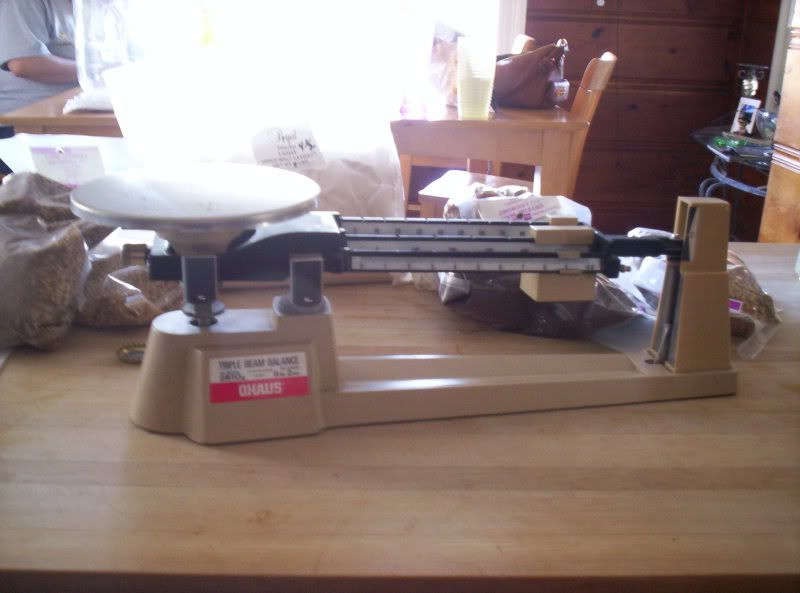
You can start with a kit from one of the homebrew suppliers. They usually come with buckets and all the basic pieces needed, except for the kettle and scale.
Additionally, I use a large funnel that fits into my carboy. They sell these at the supply store. They have a special channel that vents the air. It makes pitching the yeast, aerating and transferring the wart quick and easy. If you are piecing together and using carboys, I highly recommend one.
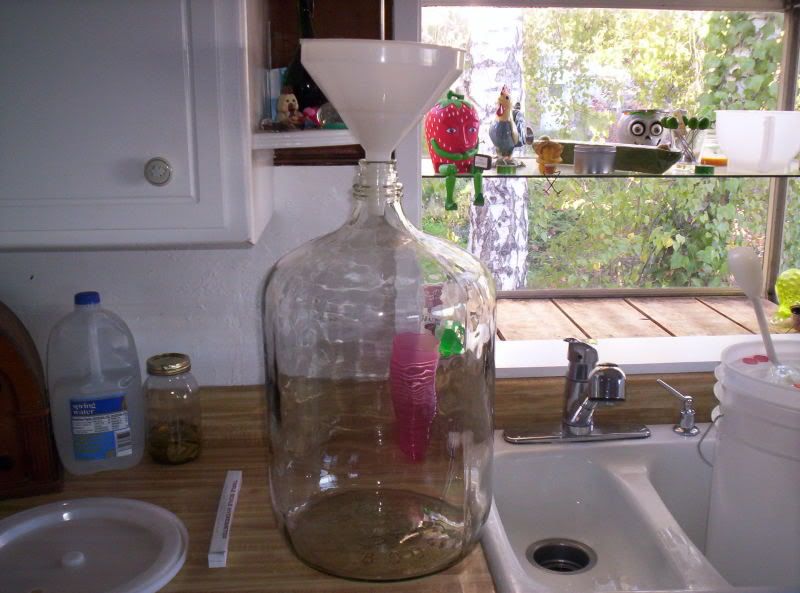
Also, a wort chiller is nice for bringing the wort temperature down rapidly. I use mine with a sump pump. I put the sump pump in a cooler full of ice and some water. This helps save a ton of water.
Extra equipment for all grain
There are many variations of all grain brewing. In Dave Miller's books, he describes the methods.
For a Lauter Tun, you can use a bucket with a spigot and a drilled bucket on top as a strainer. In the top bucket, you use a nylon strainer to keep a clean grain bed.
This method is a little difficult when it comes to heating and resting.
I use a mash kettle. I purchased a banged up 30 liter SS pot, added a false bottom and a spigot. It makes all grain less tedious.
PH strips should be used until you know how your water reacts.
That's all I can think of right now. I'm sure I'll be adding more.
Brewing beer is an art for the talentless. There is more labor, science, and ingredient combination than in wine making.
In wine making, there is small effort and a long wait. In brewing, there is a large effort and a short wait.
Remember, if you can bake cookies from scratch, by following a recipe; YOU can brew. Hell, if I can do it, a monkey can.
Basic brewing equipment.
1 To start, the most important thing is your brew kettle. You can get by with an enamelware 5 gallon pot, if you brew short batch.
Short batch is a 3 gallon boil, adding 2 gallons, (or so), of cold water at the end to chill the finished wart.
I use a 30 liter stainless steel kettle. I prefer the larger kettle to avoid a messy boil-over. Do not use an aluminum pot. Aluminum has no place in any of your brewing equipment.

2 Next is fermenters. You can use brew buckets, nothing wrong there. You can pick them up from homebrew suppliers. Alternatively, you can purchase 7 gallon food grade buckets and lids from a resturant supplier. Buy then new and clean.
I prefer glass carboys. I use a 7.5 as a primary fermenter and a 6.5 for the secondary. If you use carboys, purchase a carboy brush for cleaning.
3 Airlocks and corks. You need a rubber cork to fit the hole in the lid of your bucket, or the mouth of the carboy. The cork has a hole for your airlock. There are various airlocks, ranging from a PVC tube running into a bottle of sanitizing solution, to some with moving parts, double/triple/quadruple trap, etc. It's like underwear, everybody likes what they have.
I recommend getting an extra cork and airlock, whatever way you go.
4 Racking cane, tubing, and bottle filler. You can get a plastic cane or a stainless steel one. I prefer the stainless. If you are piecing together your equipment, go for the stainless. The tube is PVC, might as well purchase it with the cane. The supply store will have it in stock as well as the bottle filler. The bottle filler is a plastic tube that the tubing fits on. It has a push valve at the bottom.
5 Bottle capper. There are a bunch available. The supply store will help you choose the one that fits your needs.
6 Hydrometer and sample jar. These are pretty basic and inexpensive.
7 Thermometer. Again, the supply store can guide you here. I use a few different types.
8 Brew spoon. You can find a nice big stainless steel one, or get a plastic vintners/brewing spoon. This is a matter of personal preference.
9 Empty, clean bottles. Drink your favorite brews. Rinse the bottles when you are done, that way they are easier to sanitize when you bottle.
10 Cleaning and sanitizing. I use sodium percorbonate for cleaning and BTF sanitizing solution for sanitizing. I have seperate no-soap sponges for cleaning. Soap and bleach have no part in brewing.
11 Kitchen scale. This is for weighing your hops. I use a triple beam I got from a garage sale.

You can start with a kit from one of the homebrew suppliers. They usually come with buckets and all the basic pieces needed, except for the kettle and scale.
Additionally, I use a large funnel that fits into my carboy. They sell these at the supply store. They have a special channel that vents the air. It makes pitching the yeast, aerating and transferring the wart quick and easy. If you are piecing together and using carboys, I highly recommend one.

Also, a wort chiller is nice for bringing the wort temperature down rapidly. I use mine with a sump pump. I put the sump pump in a cooler full of ice and some water. This helps save a ton of water.
Extra equipment for all grain
There are many variations of all grain brewing. In Dave Miller's books, he describes the methods.
For a Lauter Tun, you can use a bucket with a spigot and a drilled bucket on top as a strainer. In the top bucket, you use a nylon strainer to keep a clean grain bed.
This method is a little difficult when it comes to heating and resting.
I use a mash kettle. I purchased a banged up 30 liter SS pot, added a false bottom and a spigot. It makes all grain less tedious.
PH strips should be used until you know how your water reacts.
That's all I can think of right now. I'm sure I'll be adding more.
Last edited:


